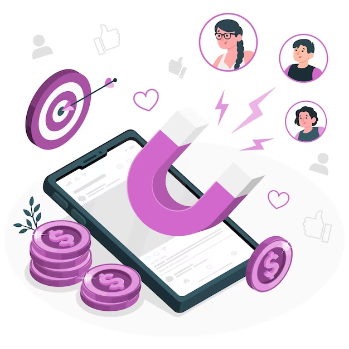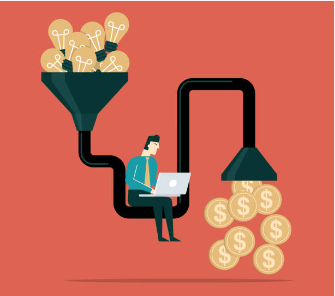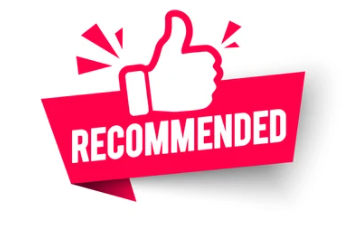In the intensely competitive Shopify e-commerce landscape, relying solely on marketing campaigns can be risky, and managing a store can be daunting, particularly considering the significance of conversion rates in boosting profitability.
It is crucial, now more than ever, to discover effective strategies to enhance the conversion rate of your Shopify store on a page-by-page basis.
This guide offers a comprehensive solution with 15 progressive yet effective techniques that can elevate the profitability of your Shopify store.
What Is Conversion?
Conversion appears when someone takes action doing what you want them to do. Every digital marketing team and website has a different definition and explanation of conversion. For example, you might consider the potential customer's interaction with pop-ups as a conversion. Or, you regard the subscription of products as conversion.
What Is E-commerce Conversion Rate?
When someone mentions e-commerce conversion rates, they are referring to conversion rates for store orders.
The formula:
E-commerce conversion rate = orders/visits to your website
Shopify conversion rate refers to the number of visitors to your Shopify store who complete a desired action, such as making a purchase, subscribing to a mailing list, or signing up for an account.
Ultimately, the goal of Shopify conversions is to increase the number of users who take a specific action, which can help businesses increase revenue and grow.
What Is Average Conversion Rate of Shopify Stores?
The average e-commerce conversion rate is about 2.5-3%, but using this benchmark is not always reliable, as other factors can affect it as well.
Industry benchmarking can be useful, but it is important to consider the context of your store. Let us take a look at the data below to gain more insight.
LittleData, a Shopify analytics app, conducted a comprehensive survey of Shopify store conversion rates and found that the average Shopify store conversion rate is 1.4%.
If your conversion rate is below 0.5%, you have room to improve, and if your conversion rate is above 3.3%, your e-commerce conversion rate is very good - ranking in the top 20% of all Shopify stores.
How to Optimize Shopify Conversion Rates?
Optimizing the website for conversion rates can increase the efficiency of the buying process. A simple and intuitive website design can help customers find what they need quickly, reducing the likelihood of a shopping cart abandonment.
A well-optimized website can help with generating more sales and revenue for your e-commerce store.
- Conduct an A/B test on the purchase process
A/B testing is a useful way to experiment with different aspects of the buying process and optimize conversion rates. Elements such as product photos, calls to action, guest checkouts, review positioning, and product descriptions can all be tested to improve results. Changing the format of product descriptions to make them more appealing and infusing personality can also help. A/B testing provides concrete data to understand customer preferences and can help make informed decisions to improve the overall user experience.
- Examine the data on your website & Track conversions
Specific data, especially conversion rates broken down by page and traffic channel, can provide insight into user behavior to help make informed decisions. Google Analytics is a popular data analysis tool. The data can be split by page to compare performance and analyze user behavior to better structure the channel; Traffic channels can learn which channels have the highest conversion rates and inform the overall traffic strategy.
- Set up a clear goal for your website
Tracking and measuring your success is essential to understand if your conversion rate is improving. Start by determining the desired actions you want visitors to take on your site and what qualifies as a conversion. For instance, a conversion could be a purchase or signing up for a newsletter.
Set achievable goals and assess the number of conversions over the last month, three months, and six months to gauge past performance. However, don't hesitate to set ambitious goals. Once your goals are established, consistently evaluate your progress against them using site analytics.
- Optimize user experience and simplify the checkout process
Improved user experience can provide your customers with a positive impression of your business, which can lead to repeat purchases and word-of-mouth marketing. By streamlining the buying process using tactics such as upselling, cross-selling, and discount offers, it can encourage customers to purchase additional products.
- Use high-quality pictures of products
In contrast to a brick-and-mortar store, customers visiting your Shopify store are unable to physically interact with the products. To create a comparable experience, it is essential to utilize high-quality visuals such as product images and videos. These visuals assist shoppers in visualizing the products, ultimately leading to higher conversion rates and a decrease in return requests.
- Set up an appropriate price for the product
Your competitors have similar websites and cheaper products. It seems more reasonable to order from them instead. You should communicate your uniqueness and the benefits you offer to your customers.
- Provide good customer support
Respond to customer inquiries and emails quickly and provide helpful solutions to their questions or concerns.
- Engage with your customers & Build trust
Offer helpful blog posts, tutorials, or videos that are relevant to your customers' interests. Keep them entertained and informed with interesting content.
- Send the email or reminder to the potential customers
To encourage visitors who have abandoned their shopping cart to complete the purchase, you can send them an email reminding them of the product they are interested in and motivating them to return to the site. You can increase your chances of switching by including social proof (such as customer reviews) in your email or offering discounts to incentivize them to return to the online store.
- Use customer reviews and ratings as your social proof
Incorporating reviews on your website can sway potential buyers and provide reassurance to first-time customers. Including relevant product reviews on each product page, encouraging video reviews, and creating a separate page for reviews are some ways to integrate them into your e-commerce site, fostering trust and credibility.
- Extend valued customer access at some significant dates
Here is a strategy to boost your Shopify conversion rate during sales, particularly around significant dates. Since some customers might miss out on the sale, you could consider extending their access for a short period, such as an hour. This will heighten the sense of urgency and potentially lead to additional sales.
Offering limited-time deals is a great way to boost your Shopify store. It taps into shoppers' fear of missing out and motivates them to make a purchase right away.
- Show relevant product recommendations
Use Shopify apps that offer personalized product recommendations based on customer interests and offer product reviews from satisfied customers.
Marketers have observed a 20% average increase in sales by delivering personalized experiences.
- Ensure a comforting return policy
Purchasing items online may not allow shoppers to physically see the product before making a decision. A transparent returns policy can provide reassurance to shoppers that they have the option to return a product if it does not meet their expectations. This can offer peace of mind to shoppers and potentially increase the conversion rate.
Conclusion
The success of your business needs to optimize the conversion rate of your Shopify store. By gaining an understanding of conversion, e-commerce conversion rate, and the benchmarks, you can implement effective strategies to enhance your conversion rate.
Hope you can boost your sales on your Shopify store not based on hypotheses but analyzed data.  By Karen15 Jul,2024
By Karen15 Jul,2024











